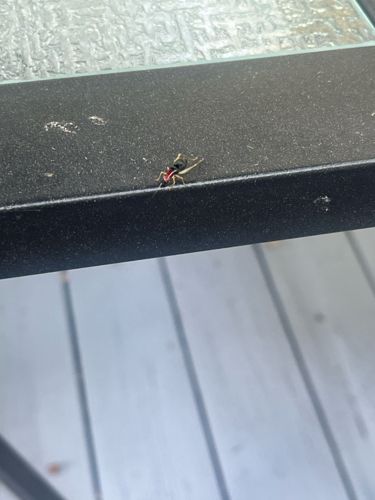Velvet Ant (likely a species of Dasymutilla)
Scientific Name: Dasymutilla (exact species cannot be determined from image)
Order & Family: Order: Hymenoptera, Family: Mutillidae
Size: Typically 6 to 20 mm (0.2 to 0.8 inches) in length, though some species can be larger.

Natural Habitat
Velvet ants can be found in a variety of habitats, including sandy areas, fields, gardens, and woodlands. They often frequent areas where their host insects (ground-nesting bees and wasps) are present.
Diet & Feeding
Adult velvet ants feed on nectar and water. Female velvet ants are parasitic, laying their eggs on the larvae or pupae of other insects, primarily ground-nesting bees and wasps. The velvet ant larvae then feed on the host larvae.
Behavior Patterns
Velvet ants are solitary insects. The females are wingless and explore the ground in search of host insect nests, primarily ground-nesting bees and wasps, to parasitize. They are known for their painful sting, which is why they are often called 'cow killers,' though their sting is not typically fatal to large mammals. They are most active during the day.
Risks & Benefits
Risk: The primary risk is their extremely painful sting, delivered by the wingless female. They are not aggressive but will sting if handled or stepped on. Benefits: As parasitoids, velvet ants can help control populations of other insects, including some considered pests, such as ground-nesting bees and wasps.
Identified on: 8/14/2025